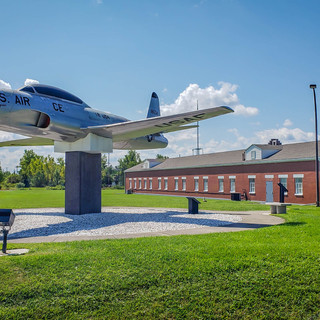From Naval Base to State Park
- by Helen Heizyk
- Aug 24, 2018
- 2 min read

Seneca Lake, our featured Finger Lake for the month of August, is home to two New York State Parks. Seneca Lake Sate Park began as a 141-acre municipal park developed by the city of Geneva in 1922. In 1957 the park was transferred to the state of New York and opened as Seneca Lake State Park. Sampson State Park, a much larger park covering 2,070 acres and located a few miles south of Geneva, was created in 1960. Sampson State Park is a popular destination for boating, picnics, swimming and camping, but did you know that, like its neighbor the former Seneca Army Depot, it has roots in military history?
With the outbreak of World War II the second largest naval training station in the country, named for Rear Admiral William T. Sampson from Palmyra, NY, acquired the lake side farm land that is known as Sampson State Park today. In May of 1942 plans were announced to build next to what was then known as the Army Ordnance Depot. Six days after that announcement contractors were chosen. Two days after that, the Navy took possession of 1000 of the 2535 acres needed. In 270 days the entire facility which included 498 training and administrative buildings, roads, rail lines, infrastructure for sewage and water, a fire station, utility building, 300 dwelling units and dormitories for 250 civilian workers was completed! Over 400,000 navy recruits were trained there over the next 3 1/2 years.

After the war Sampson Naval Training Base was used by New York State as a temporary college for 15,000 GI Bill students. Sampson College operated from September 1946 until June 1949.
When the Korean war broke out in 1950 most of the property of the training center was transferred to the Air Force which named the facility Sampson Air Force Base. By the time the Air Force base closed in 1956 over 300,000 airman had received basic training there.
After the United States declared the site as surplus, it was purchased in 1960 by the New York State Council of Parks for $500,000.

Today, nearly all the original buildings are gone. While a few old roads remain, grasses, wildflowers, shrubs and trees have been allowed to take over the old drill fields and other cleared land. Just inside the main Park entrance you will find the Sampson Memorial Museum. Here, in a building that originally served as the base brig you will find both a Navy and Air Force museum filled with photos and items detailing the history of an enormous installation that no longer exists but pays tribute to the 700,000-plus troops who trained there. If you are lucky you might even run into a former recruit or two sharing memories about their 12 weeks of training on the base. We did!
If you go: Entrance to the museum is free with admission to the park but donations are welcomed.
New York State residents 62 or older can receive free vehicle entry into state parks on non-holiday weekdays by showing their NYS drivers license or non-driver identification.
For more information:








































Comments